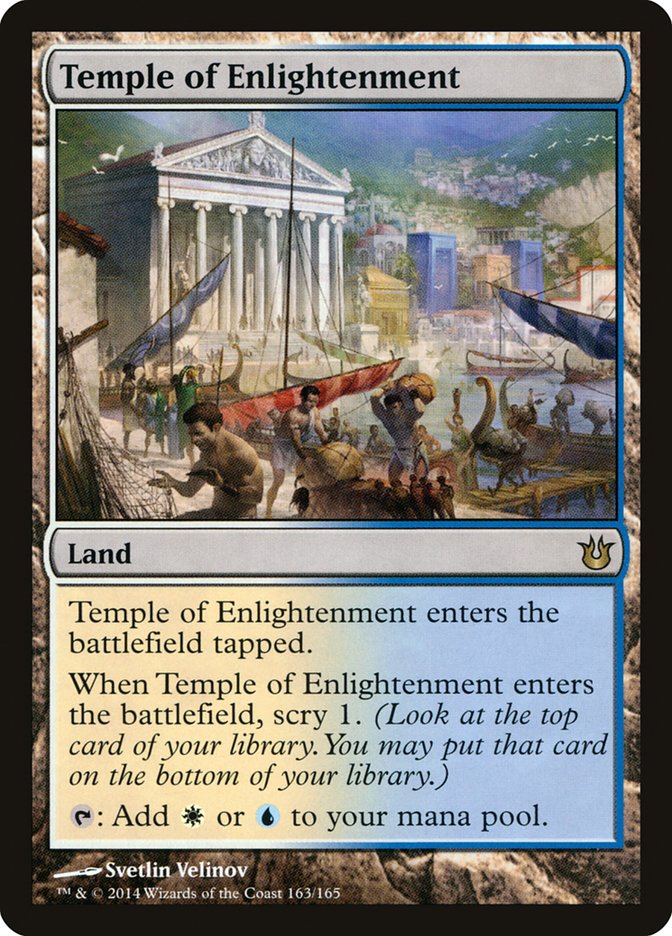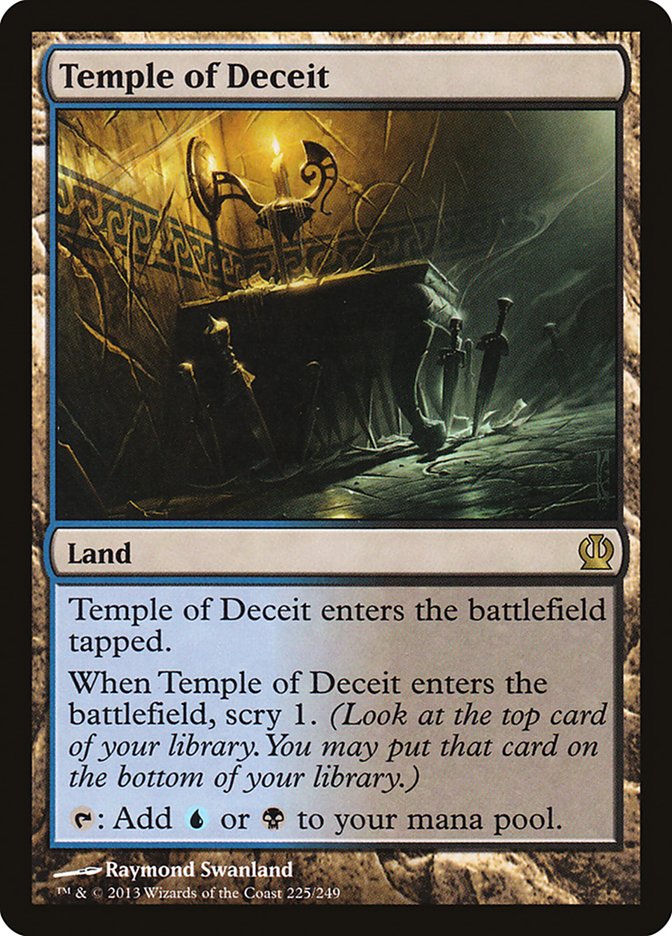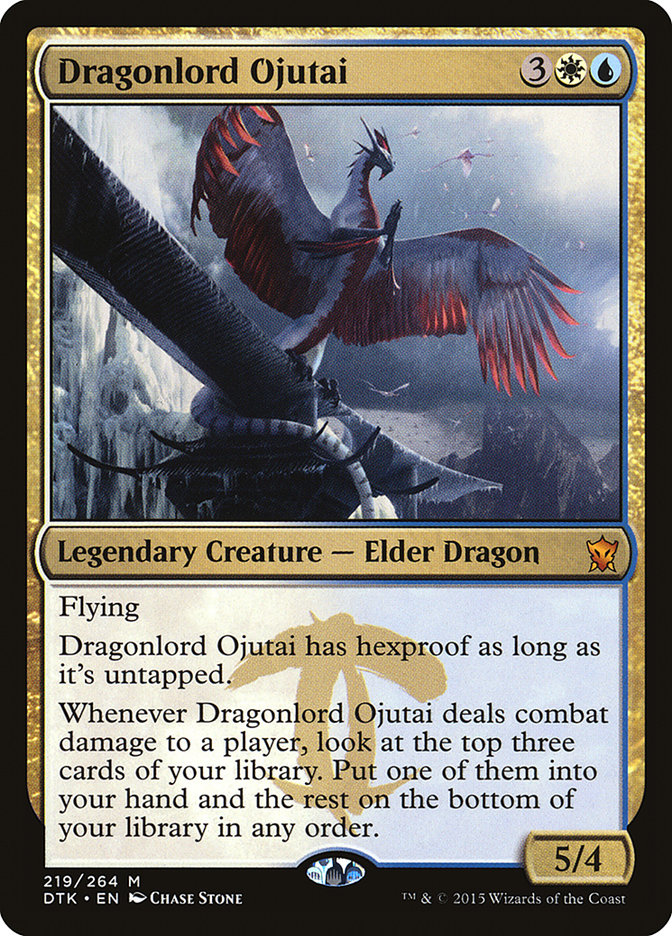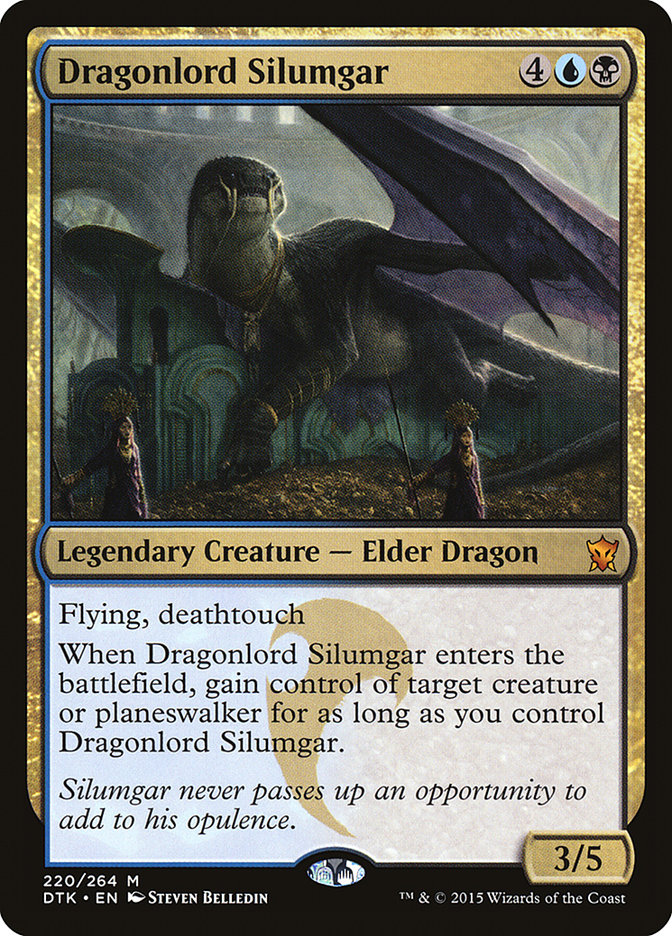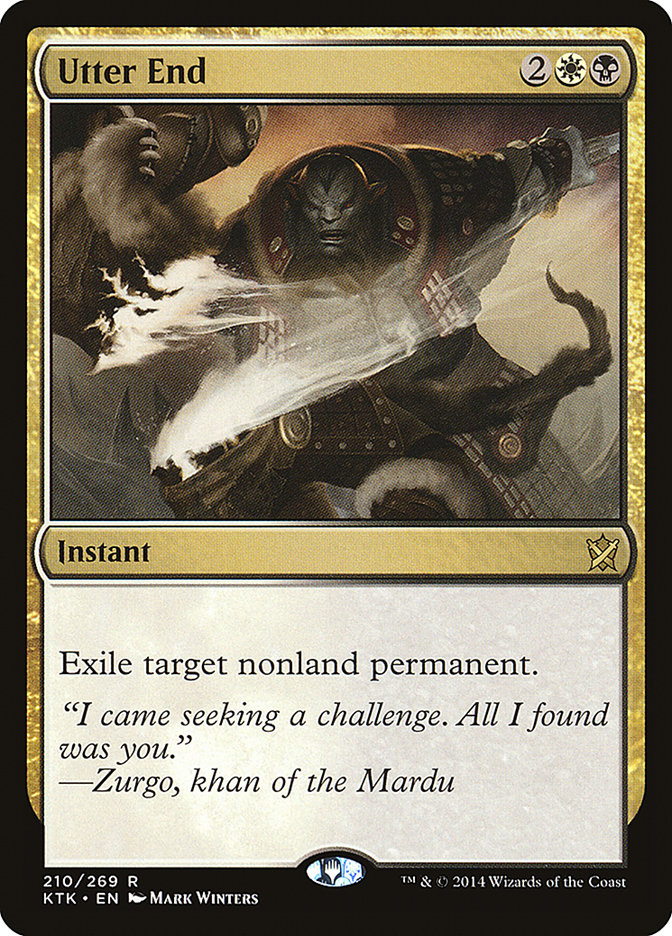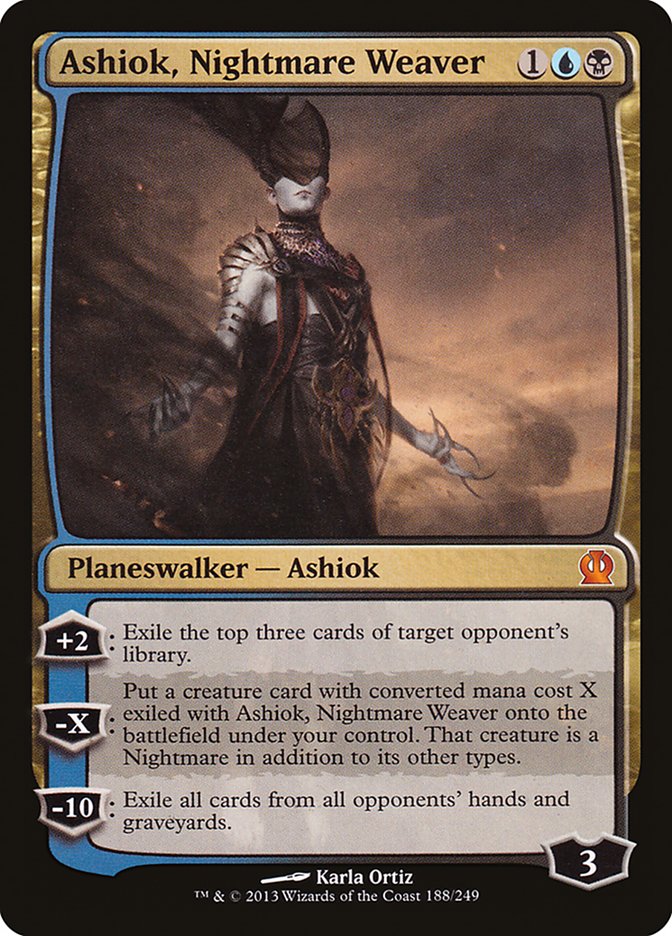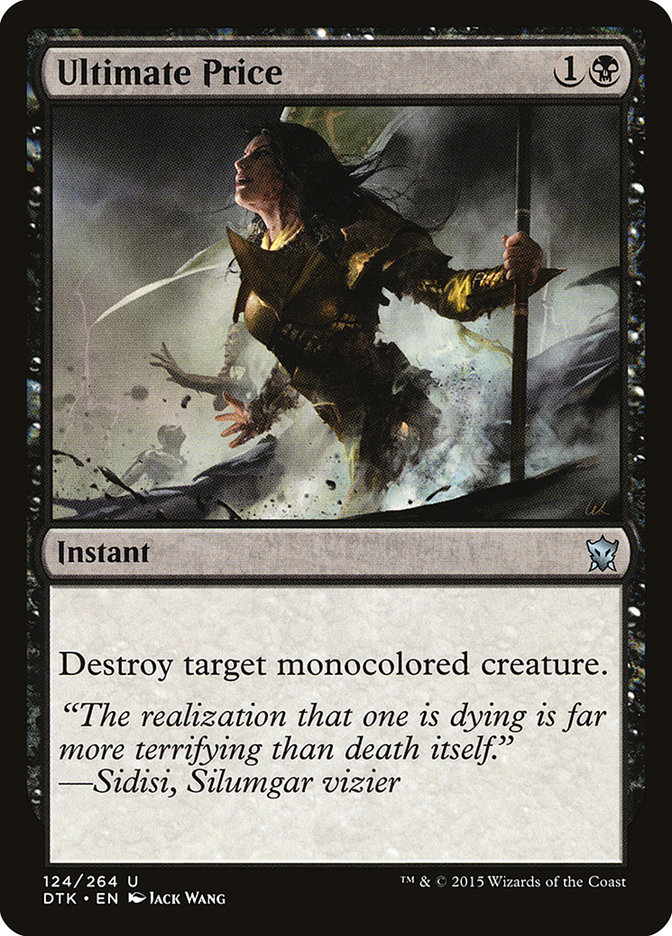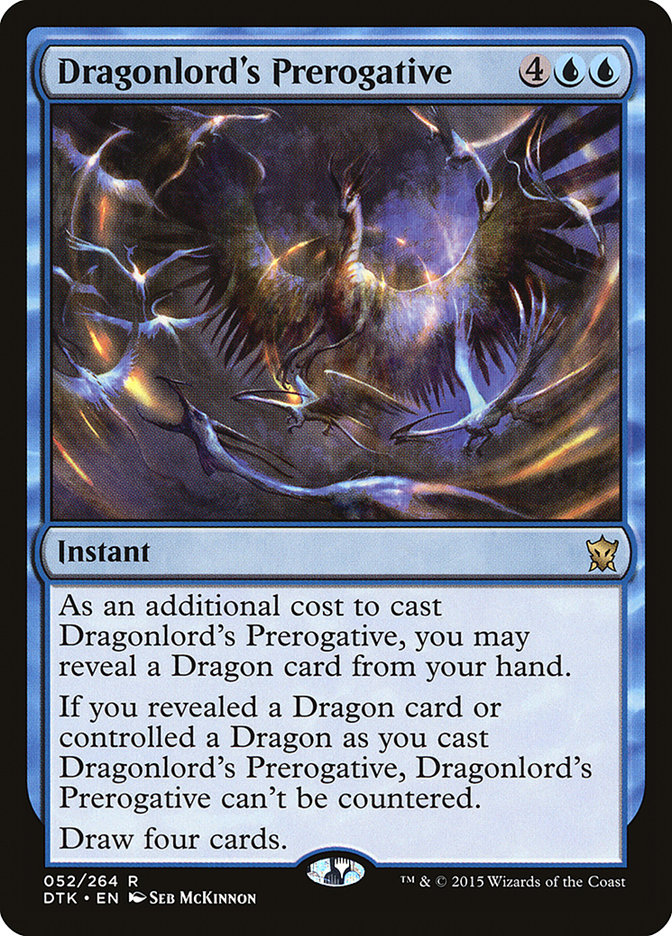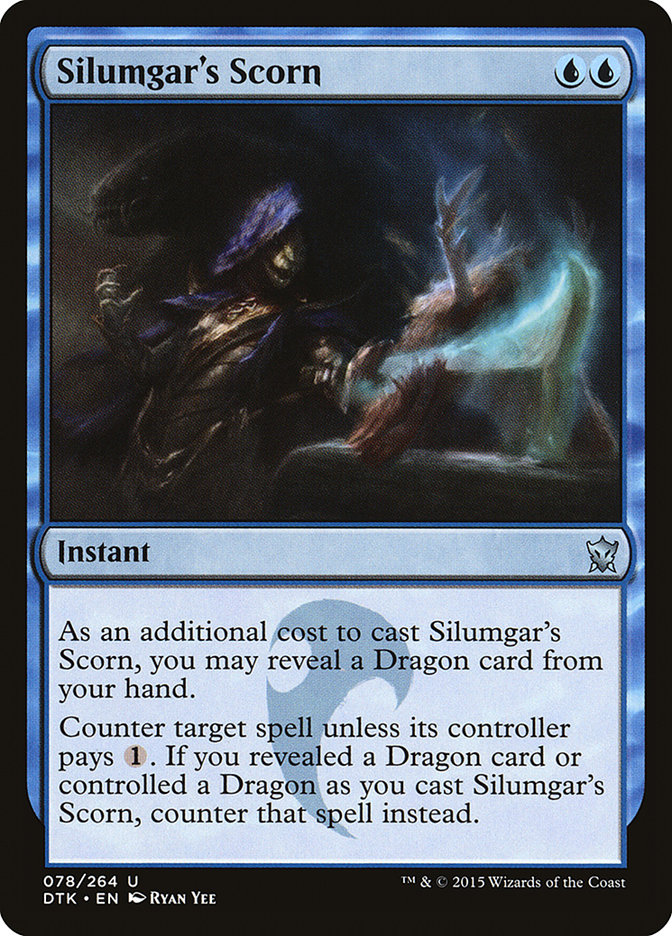This past weekend I attended the Open Series in Cleveland, where I ended up piloting Esper Dragons. I had no real experience with the deck prior to the
weekend, but I have been playing a lot of Standard lately. In addition, I had played a lot of similar Esper-style control decks in Standard and Modern last
season, so I had at least some recent experience with similar decks. This was the exact decklist I was able to play to a top 4 finish:
Creatures (4)
Planeswalkers (3)
Lands (22)
Spells (31)

Going into the tournament, I expected the field to be full of Esper Dragons, and I was correct. I ended up playing the Esper Dragons mirror five separate
times and was able to go 4-1 in the matchup. The addition of two copies of Ashiok in the maindeck were good in that regard, as were the two copies of
Narset Transcendent in the sideboard. The addition of these types of cards is what allowed me to have a favorable matchup against what would normally be a
mirror match. If you’ve been reading my articles lately, you also are more than aware of my love for Ashiok in all formats. The Esper Dragons lists that
made the top 8 of Grand Prix Krakow did not have these cards within their decklist. As I’ve mentioned in past weeks, planeswalkers are often great ways to
take control of the games in control mirrors, and this was no exception.
I ended up playing until the top 4, where I lost to the eventual champ Ross Merriam. Ross is a friend and a great player who deserved to win the
tournament. He has been putting in a lot of work lately, and his results have reflected that. If you weren’t able to catch the match, you can watch it in
full here;
My deck had a few unusual card choices, so now let me go over those individual choices as well as my experience with how the deck played out.
26 Lands without Haven of the Spirit Dragon
A high land count should not come as a surprise for a control deck, but the lack of Haven of the Spirit Dragon is likely to. Most of the decks in the top 8
of Grand Prix Krakow ran two copies of Haven, but I don’t like the idea of playing any colorless lands in a three-color deck. Haven is better than a
typical colorless land since it lets you cast your Dragon creatures, but that is not enough. Most lists are only running five Dragons, and I cut that
number further down to four. In my Modern Sultai Control deck, I recently cut the Tectonic Edges in order to smooth out the mana, and that is a format with
vastly more mana fixing than Standard. Haven is a powerful effect, especially in the longer games, but I don’t think that the benefits outweigh the cost.
In my version of Esper Dragons, Ashiok is able to provide a powerful effect in the lategame that typical Esper Dragon decks don’t have. Since I cut the
Havens, I also needed more sources of white mana to cast Ojutai. I decided to add a couple Flooded Strands and a Plains along with Caves of Koilos and the
necessary Temples. Different builds of Esper Dragons seem to fluctuate between 26 and 27 land, but I think that 26 was correct for my build of the deck.
Dragons
Yes to this guy:
No to this guy:
I ended up playing four Dragons with hexproof for my Dragon suite. Three copies of Dragonlord Ojutai is the typical number for this type of deck, but most
other builds run two additional Dragons to support them. I know that some people prefer Dragonlord Silumgar, but I wanted to make sure that I was only
playing creatures with hexproof. The control-magic style effect is powerful, but it seems to just be an easy target to me. Overall I was happy with four
total Dragons, and I don’t think that it negatively impacted the Dragon-restricted cards that I played.
Utter End
This is a card you may not have seen in other Esper Dragons decks, but it’s a very useful singleton in my maindeck. The effect and versatility is powerful
across many different matchups. When playing against other Dragons decks, the exile clause is potent against strategies that plan to recur their Dragons
with Haven of the Spirit Dragon. The effect is also very powerful specifically against Deathmist Raptor. There are a few different permanents that are
tough to deal with, and this card is an answer to all of them. Selection and card drawing spells like Anticipate, Dig Through Time, and Dragonlord’s
Prerogative allow for this card to be used to its greatest potential even though there is only one copy. I was so impressed by how it performed that I am
considering adding a second copy to the maindeck. As the popularity of Esper Dragons, Deathmist Raptor, and Den Protector increases, the ability to exile a
permanent will become more and more valuable.
Ashiok, Nightmare Weaver
It feels like I talk about this card every week, and maybe that’s because I feel like I cannot sing the praises of the card enough. The card shines in
mirror matches and is great against Abzan decks that have tons of useful creature targets. It’s not at its best against Heroic strategies, but it can still
be effective if you’re on the play. As a three-drop planeswalker, it is able to go under the Haven package that most Esper Dragons decks are running. In
addition, some people are starting to trim their copies of Hero’s Downfall since most opposing threats have hexproof in the mirror. Hero’s Downfall would
normally be a very cheap answer, which is great for Ashiok moving forward.
Ultimate Price
I didn’t run any copies of Ultimate Price because I don’t think that the card is very good right now. Many different decks have multi-color creatures, and
having maindeck cards that may be completely dead didn’t make sense to me. Bile Blight is another removal spell that can be useless against some decks, but
it can actually target Fleecemane Lion and Rakshasa Deathdealer, which is very important. Bile Blight is also more powerful against different token
strategies as well. The one downside of Bile Blight is that the mana cost is more restrictive, but that is less of a problem since I cut Haven of the
Spirit Dragon from the deck.
3 Dig Through Time & 1 Dragonlord’s Prerogative
When I was talking to Reid Duke before the event, he suggested this split. Dig Through Time is able to let you see more cards, but it only allows you to
essentially draw two of them. Dragonlord’s Prerogative, on the other hand, gives you more raw card advantage, but it doesn’t allow for as much selection.
This deck also doesn’t run cards like Satyr Wayfinder to power your delve cards, so I felt that four copies of Dig Through Time would be too many. It is
also nice to know that your important card draw spell can’t be countered at times, which is one reason why there is a second copy of Dragonlord’s
Prerogative in the sideboard.
Almost every match I played in the tournament was very close. I’ve spent the past few weeks talking about different Sultai and Esper control strategies
across multiple formats. The thing that attracts me to all these decks is that often they don’t have any truly bad matchups. At the same time, however,
they don’t have any matchups that are greatly in their favor either. A deck like this gives you the tools to win almost any match, but you have to focus on
playing correctly and giving yourself the best chance to win any particular game. You really have to focus on playing to your best ability with this deck
since although the deck is very powerful, often one mistake could cost you a game or even a match. When you play well, however, the deck often rewards you
for choosing to play such a powerful option.
Dragonlord Ojutai is an insanely powerful card as a five mana 5/4 flyer with hexproof, which happens to have another card from our deck (Anticipate) tacked
on to it. I’ve found that it’s often best to think of what cards you could hit as an out before attacking with Ojutai when you are behind. If you are
committing to attacking with it, you have to make sure that the three-card selection gives you the best chance of winning the game. Otherwise it is fine to
leave back Ojutai to block. In many of my matches, even the ones on camera which you may have saw, I was fine with trading my Dragon off with one of their
creatures to not fall low on life or behind on the board.
Two of the closest matches that I played over the weekend were against Mono-Red. Although I was able to win both matches, the games were incredibly close
and even one mistake could have cost me in either one. This is where understanding where the direction of the game is heading is huge, and it often
requires you to take some risks. People often cite aggressive red strategies as the worst matchup for the Esper Dragons deck, and they might not be wrong.
Although I was able to beat the matchup twice, I think that it might make sense to add a third copy of Foul-Tongue Invocation to the maindeck. Gaining four
life may not have initially seemed like a lot to some people, but the effect has proven to be back-breaking. Mono-Red is also very quick to deploy threats,
which has me considering a third copy of Drown in Sorrow in the sideboard. Both Foul-Tongue Invocation and Drown in Sorrow have uses in other matches as
well. I would say more so Foul-Tongue than Drown, but if you can find room in your list I would suggest adding an additional copy of both.
Silumgar’s Scorn is a great card that truly holds the deck together, but it is not at its best when playing against decks with Thoughtseize. When your
opponent plays an early Thoughtseize, they are able to take your Dragon out of your hand while mentally noting the counterspell, and the knowledge of your
hand allows them to play around the Force Spike accordingly. There are also times where you are forced into playing the only Dragon from your hand, in
which case the Scorn also loses a lot of its value because you’re tapped out. The card is obviously very powerful, and even though it’s nowhere near as
good as the original Counterspell, it has still shown that it could do a very effective impersonation. In the past week, a lot of people have been talking
up how good the card is, and I just think it may be slightly overrated at this point.
Since my thoughts of Silumgar’s Scorn being overrated and the fact that Esper along with Foul-Tongue Invocation will most likely be very popular this
weekend at both Grand Prix Toronto and SCG Portland, I am suggesting the following list and would love to hear your thoughts.
Planeswalkers (6)
Lands (26)
Spells (28)

The Open Series in Cleveland was a great event, and I was happy to see Sultai Control win the Modern IQ on Sunday (congrats Matthew Tickal!) I would have
liked to have won the main event, but I was happy to see my friend Ross Merriam leave with the trophy. Grand Prix Toronto is this upcoming weekend, and I
am not sure if I will be playing Esper or Sultai/Abzan Midrange. I think that Esper Dragons is a great deck right now, but it is likely public enemy number
one. I think that players who attend the GP and the Open are likely to make their deck decisions with the expectation of playing against Esper Dragons, and
I am not eager to play against hate cards or mirror matches for the entire weekend.
What deck do you guys think I should play at the Grand Prix this weekend? Should I play something close to my updated Esper list? Or should I continue to
work on Sultai/Abzan, as I have been this past week with good friend Brian DeMars, and run with that?

